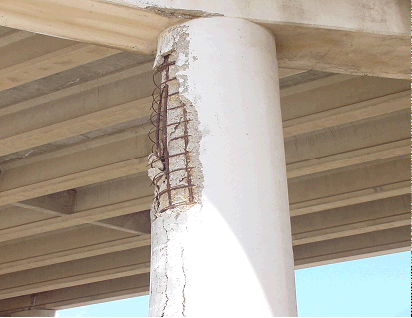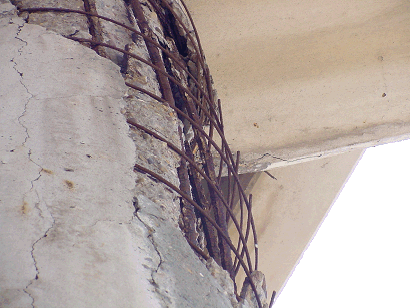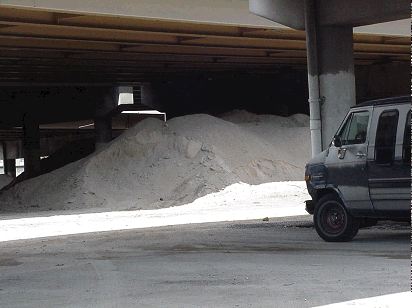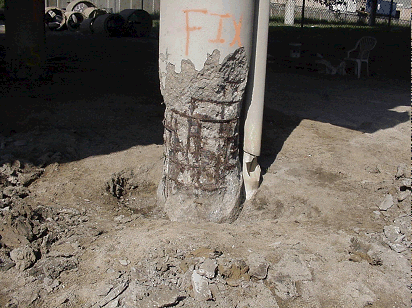Section 6: Bridge Columns
Anchor: #i1000474Risks of Chemical Damage
Columns attach the foundations to the caps which support the beams. Chemical damage occurs when expansion joints fail and chemical solution flows through the expansion joint, down the beam, down the face of the cap and down the column. If chemical stock piles are stored next to bridge structures the corrosive forces of the chemicals will induce damage to the columns.
Anchor: #i1000485Don’t Store Chemicals by Columns
To eliminate chemical damage to columns, do not store chemical materials next to columns and maintain and repair bridge joints.
Figure 5-9. Column deterioration from chemical solution contamination.
Figure 5-10. Close up of the damage. Notice the #9 bars are starting to buckle. Two reasons this could be happening: 1. Rust could be pushing on concrete causing the buckling. 2. The column could be shortening. This bridge was replaced after 20 years of service.
Figure 5-11. Salt storage under a bridge next to bridge columns.
Figure 5-12. Damage created due to the salt storage.



